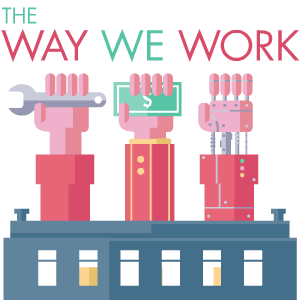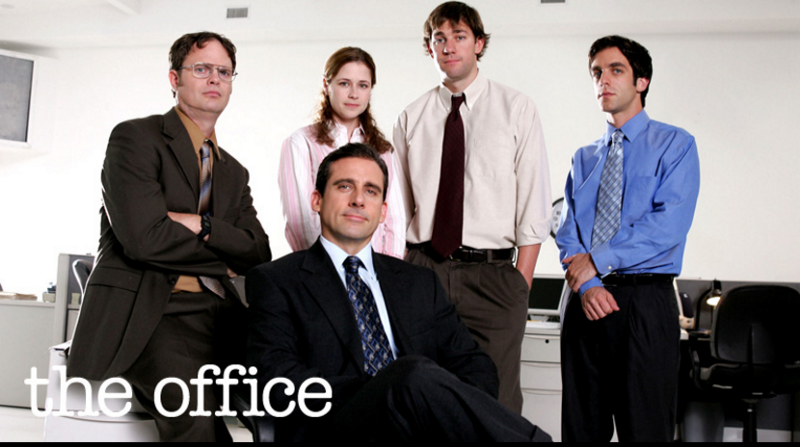

One hundred years ago to the day, on what has become International Women’s Day, Russia’s capital city of Petrograd (modern day St. Petersburg) was literally starving. It was wartime and food was scarce, particularly among day laborers, many of whom were women new to the workforce. Starting in 1914, some 250,000 of them had taken over work on their husbands’ farms or taken jobs in garment factories while the men were off fighting World War I. Three years later, the revolution for women’s rights at work was underway when a group of female textile workers went on strike–because they were underpaid and couldn’t afford to buy bread.
Word of the strike spread throughout the city, and by March 8, 1917, 100,000 laborers had taken to the streets. As the demonstration grew to more than half a million people, the marchers effectively closed down Petrograd for eight full days in protest against unequal rights for women, the country’s years-long food rations, and participation in a war that had left the economy haggard.
The demonstrators forced the abdication of Russia’s last Emperor, immediately won the right to vote from the new provisional government, and introduced the eight-hour workday (no big deal, right?). They also more or less launched International Women’s Day in the process.
It’s worth noting that the first National Women’s Day was observed in the United States in 1909, almost a decade beforehand, to honor a New York City group of female apparel workers who had also struck against poor working conditions and bad pay. Either way, the reason we celebrate International Women’s Day every year owes its origins to some ruggedly tough garment workers.
The day is celebrated (and has been since 1975) in more than 100 countries in acknowledgement of women’s ongoing achievements and historical contributions. This year, the focus has returned to its origins. A Day Without a Woman strike is in progress across the globe–calling on women who are able to abstain from working for one day in an effort to highlight their collective economic power and the value of their paid and unpaid labor. Meanwhile, the UN Women’s 2017 theme for today and the year is “Women in the Changing World of Work: Planet 50″”50 by 2030.”
The UN’s campaign notes that the world of work is changing. That has significant implications for women, but it’s true for us all. A 2015 report using data from the Bureau of Labor Statistics found that a whopping 40 percent of U.S. laborers are “contingent workers,” meaning they don’t have the security nor the benefits that accompany traditional, full-time jobs. While these part-time jobs have existed for a while, the number of people working them has increased dramatically with the explosion of the “gig economy.”
Meanwhile, most everyone who works any kind of at job at all is terrified by the idea of robots in the workplace. Truck drivers, cabbies, airline pilots, doctors, lawyers, financial managers–no one feels safe from automation. A recent McKinsey study suggests that 45 percent of the activities individuals are paid to perform at work can be automated with current, demonstrated technologies. That doesn’t just mean nearly half of the tasks performed by low-skilled workers either–the findings show it’s actually easier to partially automate the job of a CEO than it is a landscaper. The good news is that it looks like very few occupations in the near term will be automated away entirely; instead, it’s more likely that specific tasks within those jobs will be automated, requiring us to refine our human work roles as that happens.
The next boom in technological advancement is coming–and it will bring with it both opportunities and challenges to how we labor around the globe. That’s why we’ve chosen to take stock of our evolving ideas and experiences of work in our The Way We Work section with this reading list. It covers the rise of female entrepreneurs in developing countries, how to survive “the robot apocalypse,” the benefits and pitfalls of letting AI work for us, and how we can bow out of a work culture that’s gone berserk.

“To work at things that are central to your life and your perception of yourself, why would you want to retire from that? I want to die at my desk.”

Start Here
If you’re going to look at only one thing, make it the World Economic Forum’s site on the Fourth Industrial Revolution. Think of it as a tour through the world’s first three Industrial Revolutions and a preview of the next one. The first saw water and steam begin to power mechanical production; the second, electricity fuel mass production; and the third, information technology start to automate production. We’re now on the brink of what economists are calling the Fourth Industrial Revolution, one in which robotics and artificial intelligence will again accelerate our productivity.
The site takes a look at the relevant stakes from a number of perspectives: the perch of Big Data, the position of educators looking to best teach our kids, and the lens of poetry from the “unofficial poet Laureate of Twitter.”
Like the revolutions that preceded it, the Fourth Industrial Revolution has the potential to raise global income levels and improve the quality of life for populations around the world “¦
At the same time, as the economists Erik Brynjolfsson and Andrew McAfee have pointed out, the revolution could yield greater inequality, particularly in its potential to disrupt labor markets. As automation substitutes for labor across the entire economy, the net displacement of workers by machines might exacerbate the gap between returns to capital and returns to labor. On the other hand, it is also possible that the displacement of workers by technology will, in aggregate, result in a net increase in safe and rewarding jobs “¦
We cannot foresee at this point which scenario is likely to emerge, and history suggests that the outcome is likely to be some combination of the two.

Then Try
Our editorial team recommends these reads:
- Kristen Taylor suggests Jason Oberholtzer’s book The Hustle Economy: Transforming Your Creativity Into a Career. “It’s about finding creative ways to use what you happen to be weirdly good at,” she says.
- Ian Steadman, after much consideration, opts for “The Laborers Who Keep Dick Pics and Beheadings Out of Your Facebook Feed,” by Adrien Chen for WIRED [17-minute read]. “It took a long time to narrow it down,” he says, “but I went for this in the end because a) it’s a fantastic piece of journalism, but more importantly, b) the issue of labor rights in the digital realm is a global one, and beneath the surface of many of the most successful services there’s an immense amount of unpleasant, low-paid work which is deliberately kept out of view to create the illusion of automation.”
- Duncan Geere offers Sonia Sodha’s piece for The Guardian, “Is Finland’s Basic Universal Income a Solution to Automation, Fewer Jobs and Lower Wages?” [17-minute read], as “a good, readable summary of all the major arguments around the idea of basic income.”
- After reading *close* to everything that appears on this reading list, Abigail Ronck prioritizes a GQ article from 2011, “Hecho en América,” by Jeanne Marie Laskas [32-minute read] that feels more timely than ever. “Immigration and migrancy is definitely on the global brain these days, so it feels like a perfect moment to revisit a nuanced story about the actual people–migrants–who pick every single blueberry that appears in the cartons we buy in our grocery stores. It’s a tough, tough life.”

Dive Deeper
- “A World Without Work Is Coming–It Could Be Utopia or It Could Be Hell“ [4-minute read]
Ryan Avent, The Guardian [7-minute read] - “A Future Without Jobs? Two Views of the Changing Work Force“
Eduardo Porter and Farhad Manjoo, The New York Times [8-minute read] - “What Would Happen If We Just Gave People Money?“
Andrew Flowers, Five Thirty Eight [25-minute read] - “Maximum Wage“
Steven Johnson, How We Get To Next [12-minute read] - “Here’s What Really Happened at That Company That Set a $70,000 Minimum Wage“
Paul Keegan, Inc. [15-minute read] - “The Future of Work: It’s Already Here–And Not As Scary As You Think“
Josh Bersin, Forbes [18-minute read] - “Four Fundamentals of Workplace Automation“
Michael Chui, McKinsey Quarterly [9-minute read] - “The Robot That Takes Your Job Should Pay Taxes, Says Bill Gates“
Kevin Delaney, Quartz [5-minute read] - “They’re Watching You at Work“
Don Peck, The Atlantic [40-minute read] - “All Linkedin With Nowhere to Go“
ann friedman, The Baffler [19-minute read] - “Why Women Still Can’t Have It All“
Anne-Marie Slaughter, The Atlantic [50-minute read] - “How Are Remote Workers Changing the World’s Cities?“
Duncan Geere, How We Get To Next [6-minute read] - “Corporate Ethics in the Era of Millennials“
Paul Argenti, NPR [6-minute read] - “Butcher“
Tom Chiarella, Esquire [25-minute read] - “The Life“
Walter Peck, GQ [20-minute read] - “The Knowledge, London’s Legendary Taxi-Driver Test, Puts Up a Fight in the Age of GPS“
Jody Rosen, The New York Times Magazine [45-minute read] - “Night-Shifting for the Hip Fleet“
Mark Jacobson, New York Magazine [21-minute read] - “On Change in India“
Siddhartha Deb, Guernica [33-minute read] - “Why Retirement Is a Flawed Concept“
Neil Pasricha, Harvard Business Review [4-minute read] - “Maybe You Should Just Never Retire“
Drake Baer, New York Magazine [3-minute read] - “How Retirement Was Invented“
Sarah Laskow, The Atlantic [2-minute read] - “Is This Sustainable Village the Future of Retirement?“
Adam Bluestein, Fast Company [7-minute read]

Books
- Inventing the Future: Postcapitalism and a World Without Work, by Nick Srnicek and Alex Williams
- Women’s Work, Men’s Property: The Origins of Gender and Class, by Stephanie Coontz and Peta Henderson
- Modern Times, Ancient Hours: Working Lives in the Twenty-First Century, by Pietro Basso
- Race Against the Machine: How the Digital Revolution Is Accelerating Innovation, Driving Productivity, and Irreversibly Transforming Employment and the Economy, by Erik Brynjolfsson and Andrew McAfee
- The Rise and Fall of American Growth: The U.S. Standard of Living Since the Civil War, by Robert J. Gordon
- What Color Is Your Parachute? A Practical Manual for Job-Hunters and Career-Changers, by Richard N. Bolles
- Playing the Whore: The Work of Sex Work, by Melissa Gira Grant
- Nickel and Dimed: On (Not) Getting by in America, by Barbara Ehrenreich

Watch
- “Humans Need Not Apply“
OK, so even if this video overstates things just a bit, it’s still a key pop-sci “text” on automation. From educational YouTuber and podcaster CGP Grey, it’s a good explainer that’s short and to the point. [15-minute watch]
- Chasing Cameron
Check out this Netflix original documentary series about the viral stars of Vine, Instagram, and other social media sites. They’re a new kind of entrepreneur–and quickly becoming influential among Generation Z. Our editor, Ian Steadman, says: “What I thought was so incredible about it was that these kids (and they’re all kids) are completely signed up, 100 percent, to the viral gig economy. They are true children of neoliberalism in a way that I find very startling. This next generation is all about building personal brands.” [10 episodes, each 30″”33-minute watch]
- The Office
Whether you prefer the American version, or the British series that inspired it, The Office is documentary-style parody that follows the quirks and idiosyncratic personalities you’ll surely recognize if you’ve ever spent time performing nine-to-five office work. The entire American series is available to stream on Netflix, or you can buy the two-season BBC version here. [22-minute episodes]

- Enron: The Smartest Guys in the Room
This 2005 documentary is a cautionary tale that chronicles one of the greatest business scandals in history. Based on a book by Bethany McLean and Peter Elkind, it takes you inside America’s seventh largest company and the deceit of its top executives–who walked away with a billion dollars during California’s energy crisis, but left investors and employees with nothing. Available on Netflix or this free documentary-viewing site. [1 hour, 49-minute watch]
- Steve Jobs: One Last Thing
After the death of arguably the most profound computing minds of our time, PBS premiered this documentary in an effort to look at the life and work of Apple mastermind Steve Jobs–showing precisely how he revolutionized our world. Available on PBS here. [56-minute watch]
- Modern Times
Here’s a 1936 comedy written and directed by Charlie Chaplin (who also stars) about a character who struggles to survive in the industrialized world. A critique on the desperate situation facing the United States after the Great Depression, the film was recognized by the Library of Congress in 1989 as “culturally significant” and adopted for preservation by the United States National Film Registry the same year. Stream it for free here. [1 hour, 36-minute watch]


How We Get To Next was a magazine that explored the future of science, technology, and culture from 2014 to 2019. This article is part of our The Way We Work section, which looks at new developments in employment and labor. Supported by Pearson. Click the logo to read more.
